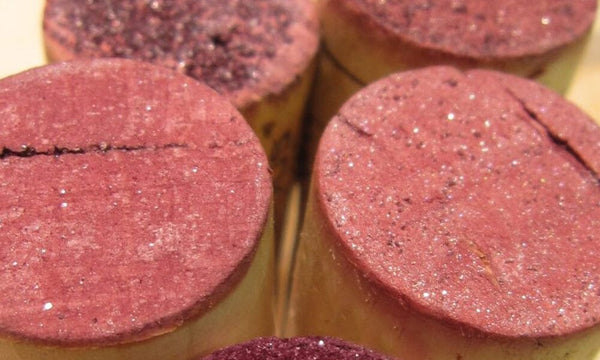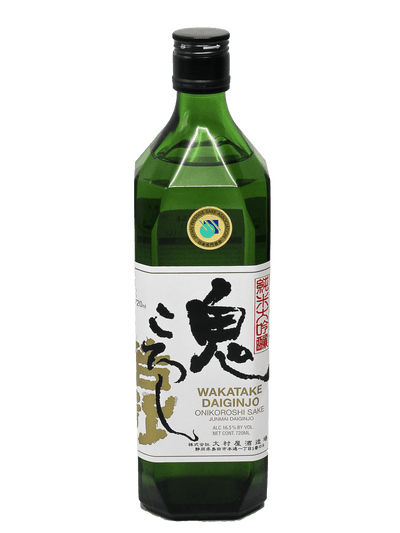What Are Tartrates in Wine?

Have you ever bout a bottle at the wine store, opened it, poured the wine into a glass, and noticed that you have “glass” in your wine? This is not glass and not some manufacturing defect. These are tartrate crystal, a completely natural and harmless results of winemaking. Tartrates are salt crystals that can form in wine, particularly in white wines and rosés. They are a byproduct of the fermentation process and are made up of tartaric acid and potassium. They usually appear as small, white crystals on the bottom of a bottle of wine or on the cork. Tartrates are harmless and can be removed by decanting the wine or by chilling it in a wine fridge. However, many wineries remove tartrates before bottling, so you may not see them in most available wines.
Do tartrates in wine represent a fault?
Tartrates are not considered a wine fault as they are a natural byproduct of the fermentation process. They are formed when tartaric acid, which is always present in grapes, combines with potassium and precipitates to produce crystals. Tartrates are considered harmless and do not affect the taste or quality of the wine. However, some people may find the appearance of crystals unappealing, and wineries may choose to remove them before bottling to avoid any potential negative perception. But in general, it is not considered as a wine fault.
What methods do wineries use to prevent tartrates from forming?
Wineries commonly use several methods to prevent tartrates from forming in wine, including, very commonly, cold stabilization. This involves chilling the wine to just below freezing temperature, which causes the tartrate crystals to form. The wine is then filtered to remove the crystals before bottling. Another is potassium bitartrate removal. This uses a potassium bitartrate removal resin to get rid of the tartrate crystals from the wine. There’s also microfiltration where the wine passes through a fine filter that removes the tartrate crystals before bottling. Less common is the addition of wine alcohol. Tartrates tend to be less soluble in higher alcohol content, so adding alcohol to wine can prevent the objectionable crystals from forming. Finally, early on in winemaking, the winemaker can use special yeasts. Some yeast strains effectively consume tartrates during fermentation. It's worth noting that some wineries also choose to not prevent tartrates from forming because they can be seen as a sign of authenticity and tradition, specially in some regions.
Fans of Natural Wine may actually view tartrate crystals as a good sign
When you order wine online, you may be looking for Natural Wine. Natural wine advocates often view tartrate crystals as a sign of authenticity and traditional winemaking, as they are a natural byproduct of the fermentation process and do not indicate any kind of manipulation or intervention. Some wineries that produce "natural wines" may choose not to remove the crystals, as a way to show that the wine has not been heavily processed or altered. So don’t be too surprised!
Additionally, some wineries that produce natural wines may not do anything to prevent tartrates from forming, as they are trying to minimize intervention in the winemaking process, this way they let the wine express itself as it naturally is. For those not in the know, the term "natural wine" is often used to refer to wines that are made with minimal intervention, using organic or biodynamic grapes and without the addition of chemicals or other artificial products.
It’s Not Glass in Your Wine
Some people may think that the tartrate crystals in wine look like shards of glass. This is understandable, as the crystals can be small, white, and translucent, which can make them appear similar to glass. However, it is important to note that tartrate crystals are completely harmless and are a natural byproduct of the fermentation process. So, after your buy wine online and find tartrate crystals, don’t panic! These shards are composed of tartaric acid and potassium and do not affect the taste or quality of the wine. Some people may find them unappealing, but they are not dangerous to consume.
How should one decant a wine that has these crystals?
Decanting a wine that has tartrate crystals is a simple process:
- Chill the wine in a wine fridge or in the refrigerator for several hours before serving. This will cause the crystals to form and settle to the bottom of the bottle.
- Carefully pour the wine into the decanter, leaving the crystals behind in the bottle.
- If you want to be completely sure of not pouring the crystals in the decanter, you can use a wine filter or a coffee filter to strain the wine as you pour it into the decanter.
- The wine is now ready to be served.
It's worth noting that it is safe to consume the crystals, but if you prefer not to, you can always avoid them by following this process and decanting the wine before serving. In addition, decanting a wine can have other benefits as well, such as aerating it, which can help to bring out the aroma and flavors of the wine.
Did you learn something about wine crystals? Please leave us a comment below and check out our other wine articles!


















Leave a comment